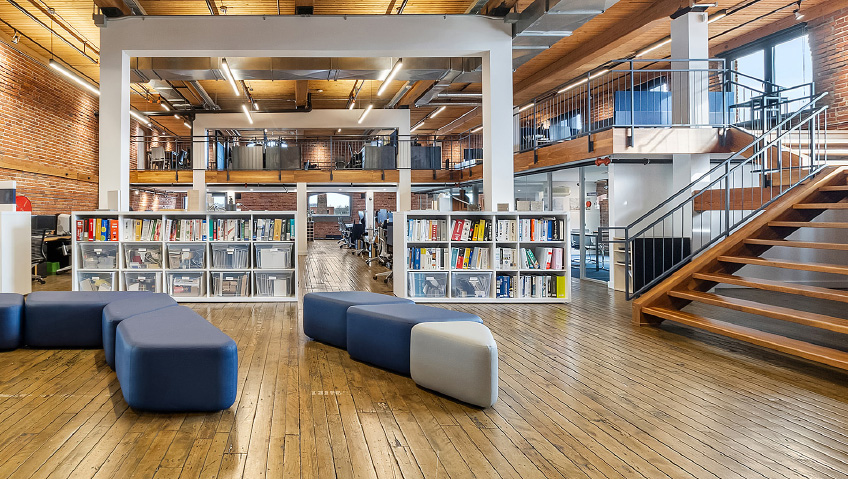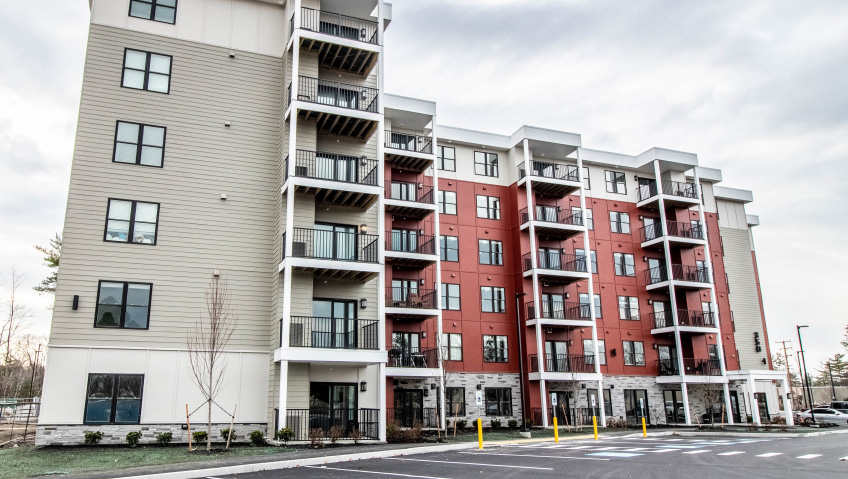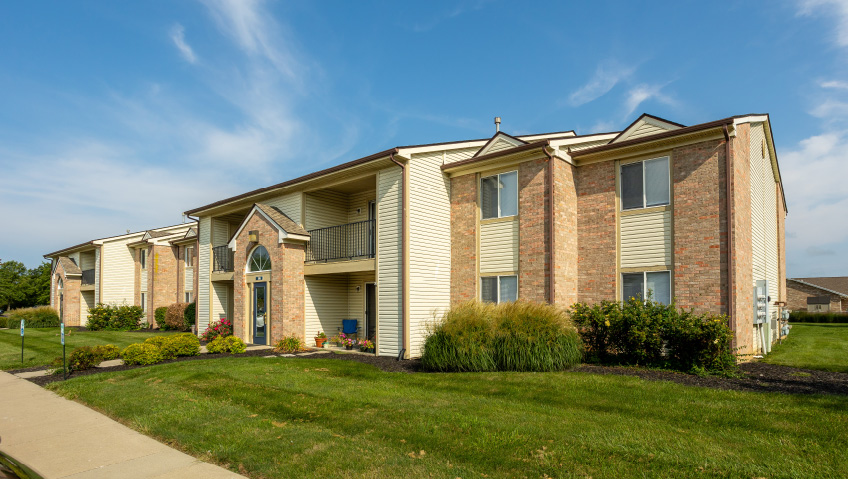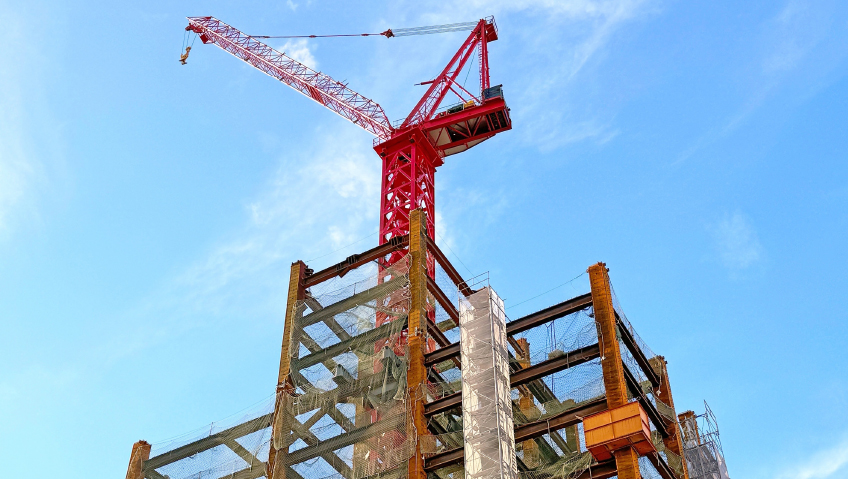Over the past two decades, Bass Installation has made its mark on such iconic projects as the Toronto Eaton Centre Skylight, 160 Front Street, and The Well Canopy, to name a few. Taking on bigger, bolder works, the Bass team is busy with The One, the company’s largest project to date, located at One Bloor St. West.
Under construction at Toronto’s famous Yonge and Bloor intersection, The One will measure a neck-craning 91 storeys when completed. At almost 330 metres—about 1,100 feet—The One is slated to be Canada’s first supertall skyscraper and the country’s highest residential building. For Bass Installation, The One will be a fitting complement to the unique balconies it installed across the road, at One Bloor St. East.
Serving the GTA
Led by father and daughter duo Stephen Callender, President, and Natasha Callender-Wilson, Vice President, Bass Installation is one of Canada’s premier curtain wall installation firms.
Founded in 2003, Bass is well-known and respected for its work in the Greater Toronto Area (GTA). Taking on residential, industrial, commercial, and industrial projects, Bass’ comprehensive services cover everything from pre-work planning to assessment, layout, complete installation support, maintenance, and more, all performed to the highest possible safety standards.
According to the latest figures, there are 324 construction cranes active in the Greater Toronto and Hamilton Area (GTHA). “There is so much work in Toronto that it is hard to leave, because we know the market, we know the players, and we know the workers,” says Stephen. “There is enough work here for us and more.”
Combining the experience of highly trained tradespeople from Ironworkers International and Glazier IUPAT unions with strong management, operations, and safety teams, Bass works with the best in the construction industry. A proud Black-owned and operated business, Bass is active with partners including the Canadian Aboriginal and Minority Supplier Council (CAMSC), the Ontario Glass & Metal Association (OGMA), the Workplace Safety and Insurance Board’s (WSIB) WSIB Health and Safety Excellence Program, and the Toronto Construction Association.
Bass is also allied with the Afro Canadian Contractors Association, better known as ACCA. Callender is in his second three-year term as President of this not-for-profit organization, which serves to increase the presence of Black, Indigenous, and People of Colour (BIPOC) contractors and construction businesses across Canada.
Although the company only deals with union workers, Bass is connected to various associations and programs through its Director of People and Culture, Samantha Berger. She works with Stephen and is connected to organizations such as TCBN, the Toronto Community Benefits Network.
“TCBN has been a huge partner for us in collaborating to find diverse members from different groups who want to get a construction, and also fit the type of work we are doing,” says Natasha. Bass has hired several salaried members through the TCBN network and, with TCBN doing the vetting, is finding top-notch candidates.
Through ACCA, CAMSC, and TCBN, Bass strives to direct underrepresented people looking for work in construction to these organizations and other companies that can help them. “With ACCA, our main thing is educating contractors on how to grow their business and get into the system,” says Stephen. “For tradespeople just getting into the business, we help them navigate the landscape of getting their business set up and going.”
Family leadership
The story of Bass Installation is one of persistence and passion. Coming to Canada from his native Barbados in 1976, Stephen Callender got a job at a window factory. Soon, he was asked to go to sites to install windows. This led to him applying for work at another company installing windows, with fellow crew members encouraging him to join the union.
Successfully becoming a member, Callender’s first job as a journeyman was at the same window factory he had left previously. Taking on other jobs, including working at General Motors for a year, he started working for curtainwall companies. In 1992, when the recession set in, Callender and his future business partner were laid off from a high-profile company, and the two started their own company. Then, in 2003 and working on his own—and with projects getting bigger and bigger—Callender founded Bass Installation, focusing on curtainwalls.
Much like her father’s story of determination, Natasha Callender-Wilson’s persistence led to where she is today as Vice President of Bass. Before joining the company, she worked several part-time and summer jobs while studying to be an accountant, including one at a large drug store and another at the non-profit Canadian National Institute for the Blind (CNIB). Taking a year off from her studies to work for her father gave Natasha a taste of the corporate world and, in 2017, she was invited to work full-time for Bass.
“I thought, ‘why not?’ I was going to school for accounting—at the time I wanted to be one—and it just made sense that I would get more exposure that way and a taste for the business,” she says. “So while working for my dad at the time, finishing school full-time, working full-time, it just naturally happened that the natural order of business is wherever you see there’s a gap, you end up filling it, and learn the most you can about that area.”
To pursue bigger projects, Stephen and Natasha saw the need for more staff. This led to Bass hiring outside help, including its first project manager (who is still with the company), and a controller to look after the office, payroll, and other aspects of accounting.
Organic progress
For the same reason, a robust safety program was needed. This saw Natasha move from her company accountant and bookkeeper role to being environment, health, and safety manager, a position she held for almost four years. Later, she became involved on the human resources side. “That’s how I grew organically within the organization, jumping in wherever there was a need,” she shares.
Unlike her father, Natasha was never a union member and didn’t work on tools, but was active on sites from a safety perspective, gaining important exposure to crucial safe work practices. Today, Bass is proud of its comprehensive safety program, which not only meets but often exceeds construction industry and government standards.
The company found itself getting more work from foreign clients, and to meet the needs of both domestic and international customers, created a separate entity, Bass Curtainwalls, owned by Natasha. Together, the Bass entities were known as Bass Installation. The business then hired its first Project Manager, Kevin Gallagher. Director of Field Operations today, Stephen and Natasha credit Kevin with helping establish much of the company’s structure that’s still in place today.
“We have other people who have come and gone, but Bass was really formed from its people, who helped make the business stronger and better overall,” says Natasha. Today, Bass has over 100 union employees, along with 25 office staff.
Landmark projects
The company has been part of countless works in the GTA, but the team is especially proud of some of the more complex, challenging jobs.
These include The Well, a massive outdoor canopy straddling five occupied buildings in downtown Toronto. “It’s become almost like a public art feature, but also with the purpose of weather-shielding customers and tenants in the space below,” Natasha explains. “It’s a very interesting feature, and almost like a hammerhead shape between the buildings—like a vortex where some of the metal structure goes down to the ground and then almost shoots up into a canopy,” she says.
“This is a unique feature we typically haven’t done in the past, but we’re getting more requests for crazy stuff. I think that’s just the beginning of that kind of work for us; it’s getting very successful.”
Another standout work is 160 Front Street West. A series of complex curved shapes, this work is still in progress, with Bass adhering to strict timelines.
Over the years, the company has also performed multiple jobs at Toronto’s legendary Eaton Centre. In this landmark, Bass was responsible for the enormous skylight and the installation of the pedestrian bridge over Queen Street connecting Eaton’s to The Bay. Taking months to construct, the new bridge was installed in 2017, replacing the original 1977 skywalk.
Of the company’s earlier projects, the BMO Building stands out strongly, says Natasha. “When you look at the skyline of Toronto, the white BMO building is one of the first towers that you see.” Here, the original white marble cladding had to be removed because pieces were falling into the concourse below. Architects came up with a plan to remove the marble and install white glass, emulating the look of marble. A bronze finish in the spine gave it a more slender look, making for a unique surface.
Game for the future
Having focused on installation for the past 20 years, Bass is now pushing toward supply and install—not manufacturing yet, but “getting in the game” as a partner able to source product and provide unique packages of Canadian, European, and Asian products to clients.
“We have mastered installation and are on to the next phase of our legacy,” says Natasha, “but I don’t see us stopping at just supply and installation. I see fabrication, I see manufacturing, I see Bass possibly creating its own brand of work: taking all the lessons learned from the great partners we’ve been working with and creating our own product at some point. That could be anywhere from five to 20 years from now.”
To ensure the years to come will be successful, Bass has a succession plan in place and is working with the Business Development Bank (BDC) on a growth program to help forge the path forward. “It’s been a big help, and they’ve been one of our top partners,” says Natasha. “We’ve been working with them for about 10 years now. They’ve been a huge support.”
Both Stephen and Natasha agree that much of Bass’s strength comes from its team of long-time, dedicated employees and the many relationships with clients and suppliers the company has built over the years. “Our motto is, ‘If you design it, we can install it.’ Just because something hasn’t been done before doesn’t mean we can’t do it.”






